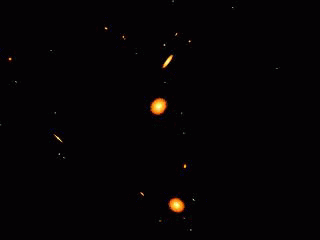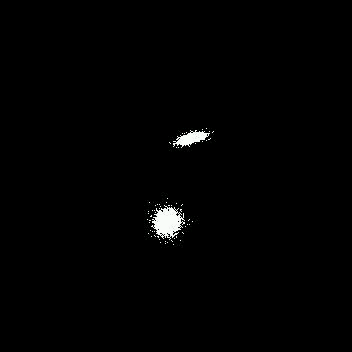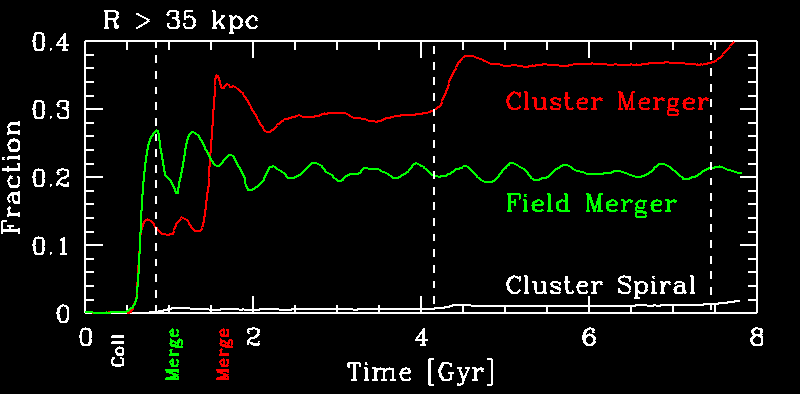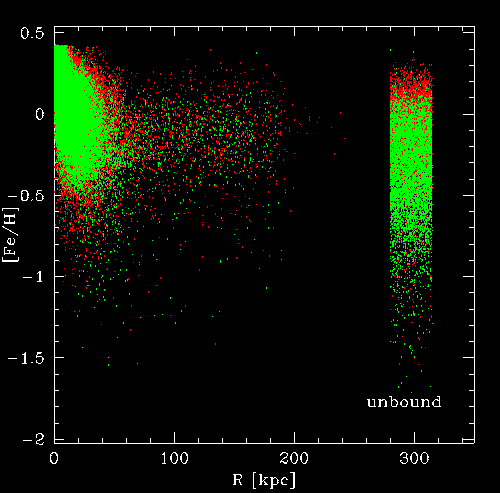- "Classical picture" of galaxy evolution in clusters: cluster potential plus ram pressure stripping dominate, while slow encounters & mergers are unlikely.
- "Hierarchical picture": galaxies are accreted in groups, where encounters are strong and slow.
Observational Data: |
Numerical Simulations: |
| (courtesy John Hibbard) |
(courtesy John Dubinski) |
- Ghigna etal (1999): mergers strong at z>1, shutoff in cluster core thereafter.
- Gnedin (2003): significant activity in outskirts, merger rate 20-30% over lifetime of the cluster


